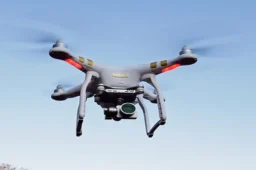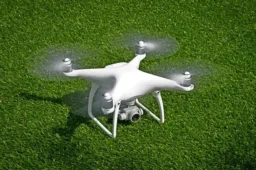
Drone With Obstacle Avoidance 2024
The drone revolution is in full swing, transforming industries, igniting creativity, and opening up breathtaking perspectives. But for many, the fear of the unknown – crashing into trees, power lines, or worse – is a formidable hurdle. Enter the game-changer: drones with obstacle avoidance.
These technological marvels are equipped with sophisticated sensors and algorithms that paint a real-time picture of their surroundings, allowing them to navigate complex environments with the grace of a seasoned pilot. Whether you’re a seasoned drone enthusiast or a curious newcomer, understanding these aerial guardians is key to unlocking the full potential of drone flight.
The Marvel of Obstacle Avoidance: How Does it Work?
Imagine a tiny, vigilant bodyguard constantly scanning your drone’s path. That’s essentially what obstacle avoidance systems do.
- LiDAR (Light Detection and Ranging): Emits pulsed lasers, measuring the distance to objects with incredible precision.
- Radar: Sends out radio waves and analyzes their reflections to build a 3D map of the surroundings.
- Vision Sensors: Cameras that use computer vision algorithms to identify and track obstacles.
These sensors work in tandem, feeding data to a central processing unit (CPU) that analyzes the information in real-time. The CPU then instructs the drone’s flight controller to adjust its course, avoiding collisions and ensuring a smooth, safe flight.

Types of Obstacle Avoidance Systems:
Not all obstacle avoidance systems are created equal. Here’s a breakdown of the main types:
- Forward and Backward: The most basic setup, offering protection in the front and rear.
- 360-degree: Provides a complete bubble of awareness, ideal for complex environments and tight spaces.
- Upward and Downward: Protects against overhead hazards and obstacles on the ground, crucial for autonomous landing and takeoff.
The Benefits of Flying with Confidence:
The advantages of obstacle avoidance extend far beyond preventing crashes. They include:
- Increased Safety: Peace of mind knowing your drone is actively working to avoid obstacles.
- Enhanced Exploration: Venture into previously off-limits areas with confidence, like dense forests or urban canyons.
- Smoother Flight: Precise obstacle avoidance leads to a more stable and enjoyable flight experience.
- Improved Productivity: Focus on capturing stunning footage or completing tasks without worrying about collisions.
Top Drones with Obstacle Avoidance:
Ready to experience the freedom of worry-free flight? Here are some of the leading drones equipped with advanced obstacle avoidance technology:
DJI Mavic 3:
Boasts omnidirectional obstacle sensing and long flight times, perfect for professional aerial photography and videography.
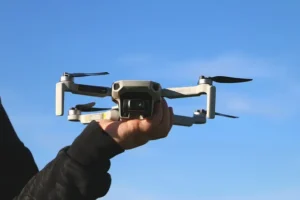
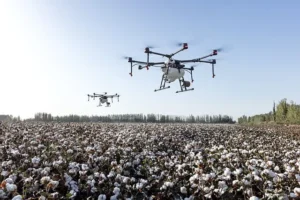
Pros:
- Pocket Rocket Performance: Weighing a mere 249 grams (less than a can of soda!), the Mini 3 Pro is the ultimate travel companion. Foldable and compact, it slips into your backpack, ready to capture breathtaking perspectives at a moment’s notice.
- Master of the Skies: Don’t let its size fool you. The Mini 3 Pro boasts a 1/1.3-inch CMOS sensor, capturing stunning detail and vivid colors. Shoot cinematic 4K/60fps footage or buttery smooth 1080p/120fps slow-motion, making those epic adventures come alive.
- Defying Gravity: Say goodbye to shaky footage! The Mini 3 Pro features tri-directional obstacle avoidance and the upgraded APAS 4.0 system, navigating around obstacles and keeping your shots smooth, even for beginner pilots.
- Unleash Your Creativity: Go beyond basic flying. The Mini 3 Pro unlocks a treasure trove of intelligent flight modes like FocusTrack, Spotlight, and Point of Interest, letting you effortlessly track subjects, create cinematic reveals, or capture mesmerizing orbit shots.
- Stay Connected, Stay in Control: Enjoy a reliable and clear live feed up to 12km away with the DJI O3 transmission system. Choose between the DJI RC-N1 remote controller or the new DJI RC, both offering intuitive controls and a max video bitrate of 18 Mbps for stutter-free viewing.
Cons:
- Battery Life: While impressive for its size, the 34-minute flight time (extendable to 47 minutes with the Intelligent Flight Battery Plus) might leave you wanting more for longer expeditions.
- Price Tag: The Mini 3 Pro comes at a premium price compared to other sub-249g drones. Consider your budget and how often you’ll use the advanced features before taking the plunge.
- Not Beginner-Friendly (Entirely): While intuitive, the Mini 3 Pro’s abundance of features might overwhelm absolute beginners. Consider starting with a simpler drone if you’re new to the aerial game.
Autel EVO Nano+:
A powerful contender from DJI’s rival, featuring omnidirectional obstacle avoidance and a high-resolution camera, making it a compelling choice for advanced users.
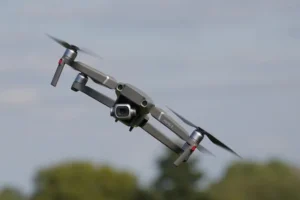
Pros:
Skydio 2:
Imagine a drone that:
- Dodges trees, power lines, and even people while filming you in action.
- Tracks your movements like a loyal shadow, capturing epic cinematic shots.
- Fits in your backpack and launches at the touch of a button.
That’s the Skydio 2, a marvel of autonomous flight and AI smarts that’s redefining what’s possible with aerial videography. But like any cutting-edge tech, it has its own unique charm (and a few quirks to be aware of).
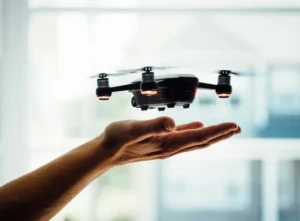
Pros:
- Unmatched Autonomy and Obstacle Avoidance: Forget complicated controls or crash anxiety. The Skydio 2’s six onboard AI processors and 360° obstacle sensors navigate the skies with superhuman reflexes, letting you focus on the action.
- Cinematic Shot Wizardry: Pre-programmed flight paths and intelligent subject tracking let you capture mind-blowing footage, like soaring alongside a mountain biker or swirling around a dancer in mid-air.
- Pocket-Sized Powerhouse: This compact drone folds neatly into a carrying case, making it your go-to travel companion for capturing epic adventures on the go.
- Effortless Control: Launch, land, and edit your footage all from the intuitive Skydio app on your phone or tablet. No pilot’s license required!
Cons:
- Pricey Tag: The Skydio 2’s advanced tech comes at a premium, making it a significant investment for casual users.
- Limited Battery Life: At around 23 minutes per charge, you’ll need to pack extra batteries for extended shoots.
- App Dependence: All control and settings are done through the app, which can be limiting if you prefer physical controllers.
- Learning Curve: While the app is user-friendly, mastering the Skydio 2’s full potential takes some practice and understanding of its AI capabilities.
Expert Decisions:
The Skydio 2 is a game-changer for anyone who wants to capture stunning aerial footage without the hassle or limitations of traditional drones. Its AI-powered flight and cinematic shot options are unmatched, making it ideal for action sports enthusiasts, travel vloggers, and creative professionals. However, the hefty price tag, limited battery life, and app dependence might make it less suitable for casual users. If you’re willing to invest and embrace its unique workflow, the Skydio 2 will take your aerial videography to a whole new level.
Remember:
While obstacle avoidance technology is a significant advancement, it’s crucial to remember that it’s not foolproof. Always fly responsibly, be aware of your surroundings, and never rely solely on technology to keep your drone safe.
The Future of Flight:
The world of drone technology is constantly evolving, and obstacle avoidance is at the forefront of this innovation. With advancements in sensor technology, processing power, and artificial intelligence, we can expect even more sophisticated and reliable systems in the future. This paves the way for drones to play an even greater role in our lives, from search and rescue operations to package delivery and even autonomous transportation.
So, embrace the confidence and freedom that drones with obstacle avoidance offer. Explore new horizons, capture breathtaking perspectives, and experience the joy of flight like never before. The sky is no longer the limit – it’s your playground to conquer.
Additional Tips:
- Check your drone’s manual for specific instructions and limitations of its obstacle avoidance system.
- Start in open areas and gradually progress to more complex environments as you gain confidence.
- Always keep a visual line of sight with your drone, even if it has obstacle avoidance.
- Stay informed about local drone regulations and fly responsibly.
With these tips in mind, you’re ready to take your drone adventures to the next level. So, spread your wings, activate your obstacle avoidance. Connect with Genoffpotomac.com for latest update.



